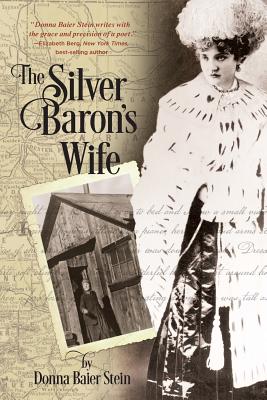“There is nothing new in the world except the history you do not know.” President Harry S. Truman
Whether you are a yesteryear scholar or naivety, reading historical fiction can put the STORY in history. It helps us discover what we don’t know and reimagine what we do.
 This genre intentionally intersects imagination with actual events, places, and/or people of history. Some authors rely heavily on their creativity, whereas others tip the scales with verifiable research.
This genre intentionally intersects imagination with actual events, places, and/or people of history. Some authors rely heavily on their creativity, whereas others tip the scales with verifiable research.
James Michener was famous for the detailed research that he incorporated into his classic works, like “Hawaii“ and “Space.” Ken Follett masterfully uses the past as a backdrop for many of his literary creations. Despite fictional components, they are factually abundant.
Among the styles of historical fictional, I find autobiography most intriguing. Think of “The Killer Angels,“ Michael Shaara’s Pulitzer Prize winning novel, written in the voices of Union and Confederacy soldiers, which transports readers onto the physical Civil War battlefields and inside the emotional devastation and ambivalence:
Chamberlain closed his eyes and saw it again… It was the most beautiful thing he had ever seen. No book or music would have that beauty. He did not understand it: a mile of men flowing slowly, steadily, inevitably up the long green ground, dying all the while, coming to kill you, and the shell bursts appearing above them like instant white flowers, and the flags all tipping and fluttering, and dimly you could hear the music and the drums, and then you could hear the officers screaming, and yet even above your own fear came the sensation of unspeakable beauty.
Like Shaara’s choice of Civil War Generals, some authors tell their story through well-known characters. Others opt for less famous subjects.
I recently attended an panel where author Donna Baier Stein spoke of her new historical fiction, The Silver Baron’s Wife. The book is written from the perspective of Elizabeth, “Baby Doe” Tabor, an unconventional 19th century woman whose monetary and romantic fortunes and misfortunes were linked to the late 1800’s silver mining fervor.
The book’s inspiration took root when Ms. Baier Stein was only seven-years-old and on a family vacation to Colorado. Ms. Baier Stein shared some of her thoughts with me about The Silver Baron’s Wife and historical fiction as a genre:
Curious Cats Read: Do you feel that the genre of historical fiction offers readers a perspective (of specific people or events) that non-fiction alone cannot?
Donna Baier Stein: Definitely, yes. While non-fiction offers readers facts as they have been recorded, historical fiction adds the much richer layer of seeing those past events through another person’s eyes and heart. To me, this makes all the difference. We already know that as human beings, we can see the same event or situation from wildly different perspectives. A fictional account brings us into one or more of those perspectives.
 In my novel, The Silver Baron’s Wife, I stayed true to the historical timeline of Lizzie Tabor’s life. I included key events that were recorded in newspapers of the day. For instance, Lizzie and Horace’s sumptuous wedding at The Willard Hotel in 1883. But because the novel is written in a first person voice, I was able to present that wedding as if I (and hence, the reader) were there and could have the emotional experience that Lizzie might have had.
In my novel, The Silver Baron’s Wife, I stayed true to the historical timeline of Lizzie Tabor’s life. I included key events that were recorded in newspapers of the day. For instance, Lizzie and Horace’s sumptuous wedding at The Willard Hotel in 1883. But because the novel is written in a first person voice, I was able to present that wedding as if I (and hence, the reader) were there and could have the emotional experience that Lizzie might have had.
It is known that President Chester Arthur and his all-male Cabinet attended the wedding, but none of the Cabinet members’ wives did because this marriage between two divorcées was so scandalous. In my first-person telling of Lizzie’s story, I imagined how that public shaming might have affected her, how she felt during her life. Because to me, one of the wonderful things about fiction is that it reveals what it is like to be human – in many incarnations!
I’m reminded of “Lincoln in the Bardo.” George Saunders has said that the varying reports of the weather the night of the reception at the opening of the book are a mix of historical and fictional. I find that fascinating. One person says there was a golden moon that night; another says it was a fat green crescent; a third says there was no moon at all.
Stephen King says “good fiction is the truth inside the lie.”
Curious Cats Read: Based upon your research and writing, how does your impression of Baby Doe Tabor compare to that of her public reputation?
DBS: My impression of Baby Doe Tabor is that she was a multi-faceted, fascinating woman—far more complex and interesting than sometimes portrayed. In my opinion, she’s too often been seen as a brazen young blonde who stole the wealthy Horace Tabor from his loyal wife Augusta. The fact of this is correct, though the verb “stole” may not be. In the opera, The Ballad of Baby Doe, for instance, Lizzie is seen primarily as first the mistress and then the wife of a rich, politically-ambitious man.
What drew me to her story was the existence of thousands of her dreams that are in a collection at the History Colorado Center in Denver. She was extremely unusual in writing down her dreams in such detail. Unlike today, there weren’t dream groups or dream journals or books on dream interpretation. Her spiritual life was extremely important to her, and this interested me. She had all the things society tells us will make us happy – marriage, money, motherhood – and still felt something lacking. How did she confront that lack?
Curious Cats Read: What are some of your favorite historical fiction books?
DBS: I loved “Lincoln in the Bardo” and consider it one of the best books, historical or contemporary, I have ever read. I also loved “All the Light We Cannot See” by Anthony Doerr,” The English Patient” by Michael Ondaatje, and “The Remains of the Day” by Kazuo Ishiguro.
Thank you Donna Baier Stein for sharing your insights with us. I hope readers will enjoy The Silver Baron’s Wife.
Some additional historical fiction book recommendations from Curious Cats Read readers:
A Piece of the World • Circling the Sun • Girl with a Pearl Earring • The Other Boleyn Girl
My Dear Hamilton • The Velveteen Daughter